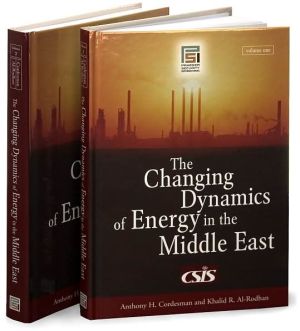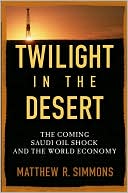Changing Dynamics of Energy in the Middle East
The recent rise in global demand for energy and the resulting spike in energy prices have illustrated just how important Middle Eastern energy exports are. This book, the first on the subject since the hike in energy prices impacted the global energy market, outlines the current facts that shape the ability of Middle Eastern producers to supply energy exports. It explores the possible future causes both of major interruptions in supply, and of failures to maintain and expand export capacity,...
Search in google:
The recent rise in global demand for energy and the resulting spike in energy prices have illustrated just how important Middle Eastern energy exports are. This book, the first on the subject since the hike in energy prices impacted the global energy market, outlines the current facts that shape the ability of Middle Eastern producers to supply energy exports. It explores the possible future causes both of major interruptions in supply, and of failures to maintain and expand export capacity, and, though it does not predict a major energy crisis, it does describe a range of factors that could produce one.The recent rise in global demand for energy and the resulting spike in energy prices have illustrated just how important Middle Eastern energy exports are. This book, the first on the subject since the hike in energy prices impacted the global energy market, outlines current facts that shape the ability of Middle Eastern producers to supply energy exports. It explores the possible future causes both of major interruptions in supply, and failures to maintain and expand export capacity, and, though it does not predict a major energy crisis, it does describe factors that could produce one.Authors Cordesman and Al-Rodhan analyze the plans of each country in the region, compare those plans with the forecasting models of international organizations, and study each country's prospects for stability. They also analyze how importing countries such as the United States, Europe, China, and India are dealing with the changing nature of global dependence upon MENA oil.Offering the most comprehensive data on current energy resources, production capacities estimates, import dependence, and national plans and strategies, The Changing Dynamics of Energy in the Middle East analyzes current energy modeling, and shows how the lack of supply-driven models has had a negative impact on the understanding of policy makers and strategic thinkers. The book concludes its analysis with possible strategic, economic, and demographic scenarios for the Middle East, projecting the impact of each scenario on future energy developments. Foreign Affairs Drawing heavily on work by the U.S. Department of Energy and the International Energy Agency, as well as other sources, the authors have produced a handbook on the export of oil and gas from the Middle East and North Africa. Projections of world demand for oil -- made out to 2030 by the IEA -- suggest a noteworthy increase in world dependence on oil from the Persian Gulf (or the Arabian Gulf, as some countries call it) and the need for significant increases in oil production in the Middle East and North Africa. The authors provide an overview of the demographic, economic, military, and political outlook in the first three chapters, followed by a detailed country-by-country (from Algeria to Yemen) examination of the decision-making processes, economic trends, oil- and gas-field developments, and plans for investment in the production and export of oil and gas. This is a highly informative, fact-filled reference on a topic of global importance.
ACKNOWLEDGEMENTSCHAPTER 1: THE IMPORTANCE OF MNEA ENERGYCHAPTER 2: GEOPOLITICAL, STRATEGIC, AND SECURITY DIMENSIONS IN THE MENACHAPTER 3: POLITICAL, ECONOMIC, AND DEMOGRAPHIC DYNAMICS IN THE MENACHAPTER 4: NATIONAL ENERGY DEVELOPMENTS IN THE GULFCHAPTER 5: NATIONAL ENERGY DEVELOPMENTS IN THE LEVANTCHAPTER 6: NATIONAL ENERGY DEVELOPMENTS IN NORTH AFRICACHAPTER 7: KEY AREAS OF UNCERTAINTY DRIVING GLOBAL AND MENA ENERGY FORECASTINGCHAPTER 8: SUPPLY, DEMAND, FINANCING, AND THE FUTURE OF ENERGY IN THE MENACHAPTER 9: GEOPOLITICAL INSTABILITY AND POSSIBLE FUTURE SCENARIOSENDNOTES
\ Foreign AffairsDrawing heavily on work by the U.S. Department of Energy and the International Energy Agency, as well as other sources, the authors have produced a handbook on the export of oil and gas from the Middle East and North Africa. Projections of world demand for oil -- made out to 2030 by the IEA -- suggest a noteworthy increase in world dependence on oil from the Persian Gulf (or the Arabian Gulf, as some countries call it) and the need for significant increases in oil production in the Middle East and North Africa. The authors provide an overview of the demographic, economic, military, and political outlook in the first three chapters, followed by a detailed country-by-country (from Algeria to Yemen) examination of the decision-making processes, economic trends, oil- and gas-field developments, and plans for investment in the production and export of oil and gas. This is a highly informative, fact-filled reference on a topic of global importance.\ \








